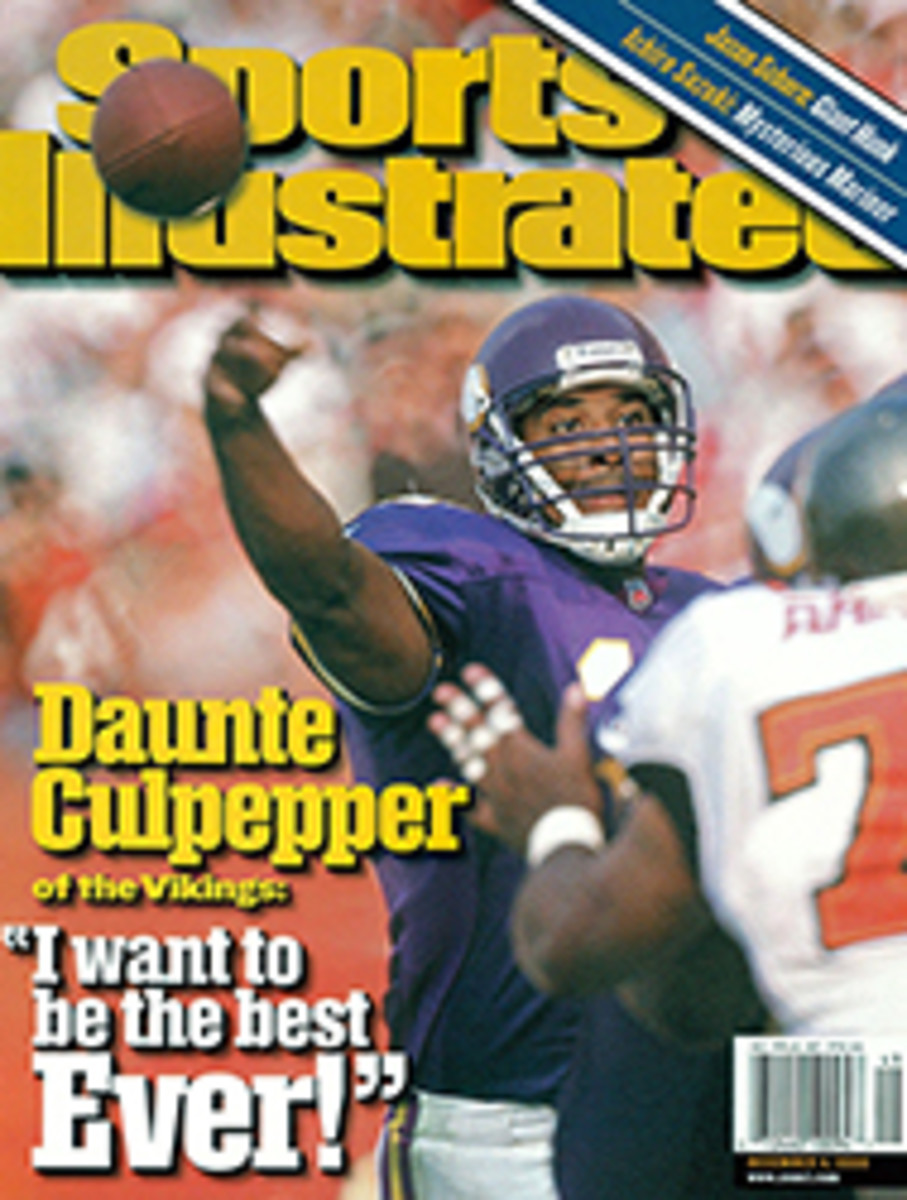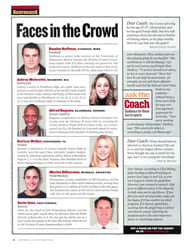
Skating Through a Loophole Mike Comrie, the most exciting junior since Eric Lindros, is on a fast track to free agency
Mike Comrie, the most exciting junior hockey player since Eric
Lindros, is 5'10" and weighs 181 pounds--big enough to be
shredding the Western Hockey League for the Kootenay (B.C.) Ice,
yet compact enough to have eased through a loophole between the
once parallel paths that North American teens could travel to the
NHL. For years there were two distinct tracks for hockey hopefuls
from Kelowna to Kennebunkport. One was junior hockey, based in
Canada, which offers a 72-game schedule plus playoffs that ape
those in the NHL. The other was U.S. college hockey, which
increasingly turned out high-quality players despite scheduling
fewer games and requiring those nasty term papers.
The two systems were separate and pretty much equal until a
University of Michigan defenseman named Mike Van Ryn came along.
Van Ryn, a New Jersey Devils first-round draft choice in 1998,
bolted the Wolverines after his sophomore year to play for Sarnia
of the Ontario Hockey League. NHL clubs retained the rights of
drafted collegians until they leave school, but Van Ryn
challenged that practice in court, and last June arbitrator
Lawrence Holden ruled that a player drafted off a college team
could play one season of major junior hockey as an overage player
(20 years old) and then become a free agent.
At least three other collegians, including Comrie, a 20-year-old
Michigan sophomore who had been carrying a 2.9 GPA as a business
major, have taken advantage of the Van Ryn ruling, leaving school
to leverage free-agent status at the start of their careers
instead of much later. Money is not an issue--rookie free agents
are governed by the entry-level salary scale, which, for 2001
draftees, caps their pay for three seasons at $1.13 million a
year--but the choice of destinations is.
Van Ryn, who signed a three-year deal with the St. Louis Blues a
week after Holden's ruling, challenged the system because he was
wary of the Devils, an organization that keeps a lid on salaries
and often requires a lengthy apprenticeship for young players.
Comrie, however, likes the Edmonton Oilers, who made him the 91st
pick in the 1999 draft. Comrie is a native of Edmonton. The
Oilers' Stanley Cups in 1987 and '88 were like mother's milk to
him. He even has adopted some of Wayne Gretzky's gestures,
raising a hand as he skates to the Kootenay bench on line changes
and gliding on his left skate while curling his right in the air
above it. Comrie also likes the Edmonton style of puck pursuit,
but he's in no rush to commit to the Oilers, who have until June
1, 2001, to sign him before he becomes a free agent.
When pressed on what he is looking for in a team, Comrie speaks
blandly about "the right situation" and "a place where I can
contribute." He refuses to be specific about his future--Stanley
Cup prospects, the weather of his team's city, the proximity of
decent Mexican food, anything.
"Mike wants to play in the NHL right away," says Kootenay general
manager Bob Tory. "Maybe Edmonton is that situation. But the
question that has to be asked is, Can a Canadian team in a small
market get enough talent around a good player so he can truly
succeed?"
Comrie, a finalist last year for the Hobey Baker Award, given to
the best college player in the U.S., has owned the WHL in his
first 9 weeks in the league after an impressive performance at
the Oilers' training camp. Through Sunday he led the league with
37 goals and 34 assists. He had at least one point in all but two
Kootenay games and goals in 23 of 29. He has scored with
defensemen draped on him like shawls, and he has scored on a
face-off by taking the puck through Calgary Hitmen right wing
Pavel Brendl, the fourth player drafted in 1999, and beating
goalie Brent Krahn, the second goalie picked in 2000.
Comrie is a threat to Ray Ferraro's WHL record of 108 goals and
Rob Brown's mark of 212 points in one season, both set during the
offensive insanity of the 1980s, far removed from the
neutral-zone traps and left-wing locks Comrie faces. Comrie is
also precocious on defense, although he still must figure out the
shortest distance back to the play after his line turns over the
puck, which is "something all kids have to learn," says Kootenay
coach Ryan McGill, a former NHL defenseman. "But he's always the
first one to the puck, he's dangerous all the way to the red
line, and he's got the will to be the best player on the ice
every night. He's going to give himself a chance to be a great
player."
Somewhere.
--Michael Farber
COLOR PHOTO: JONATHAN SELKOWITZ Comrie's 37 goals and 34 assists for Kootenay lead the WHL.

